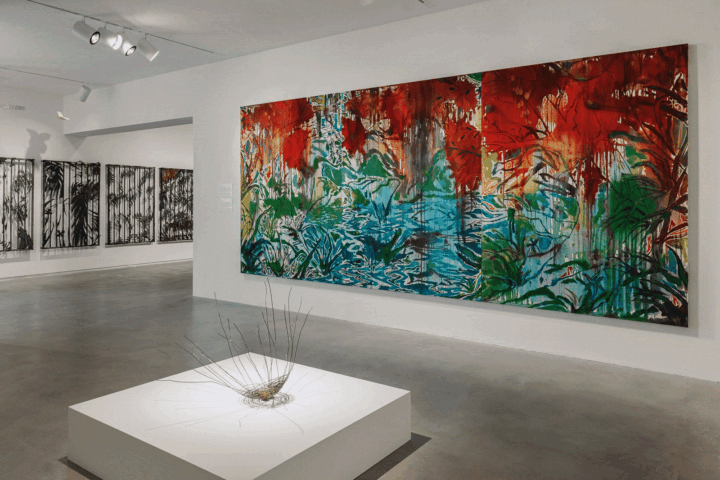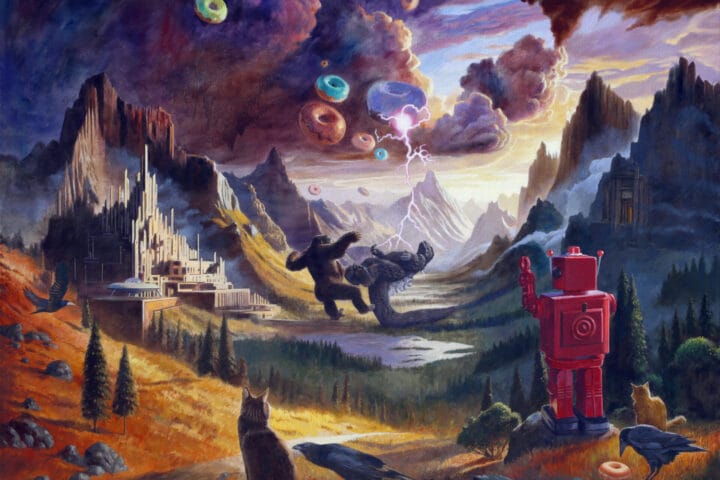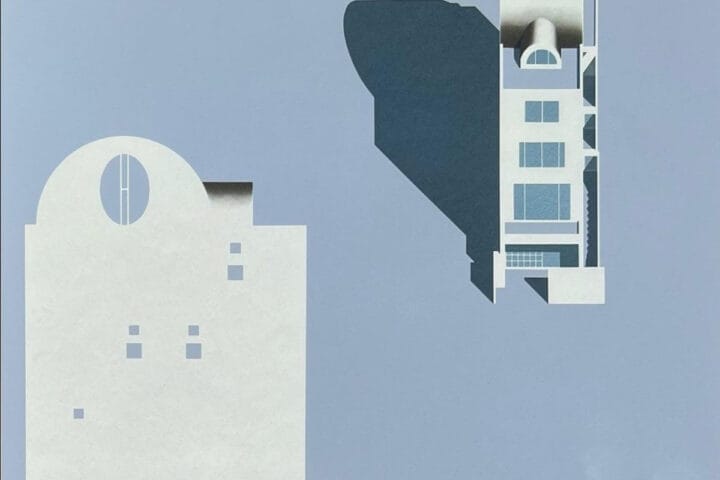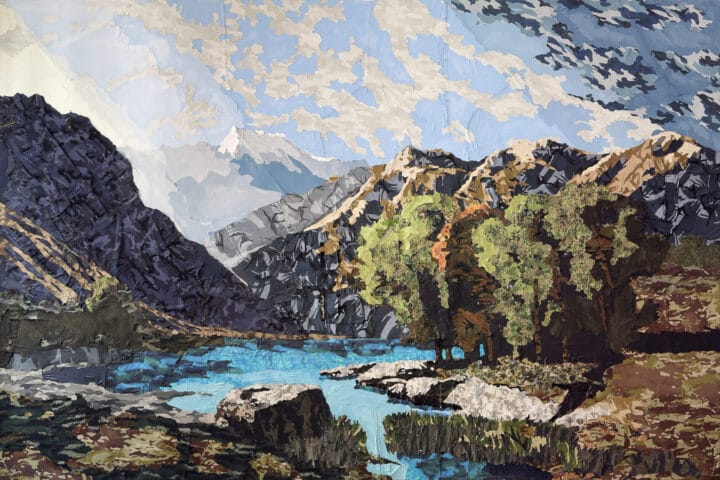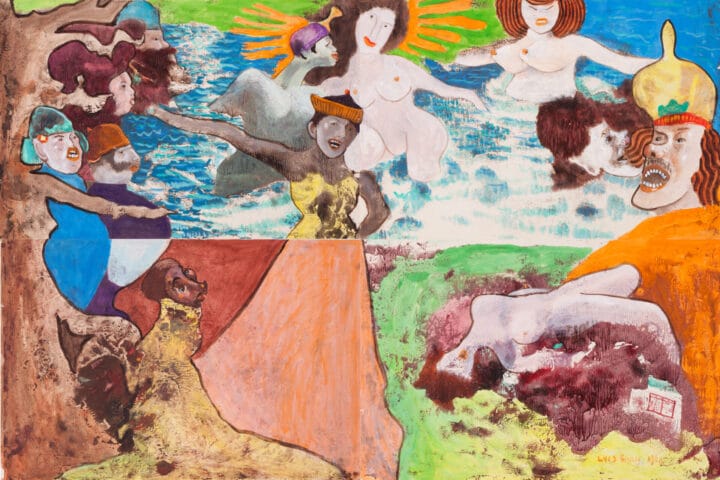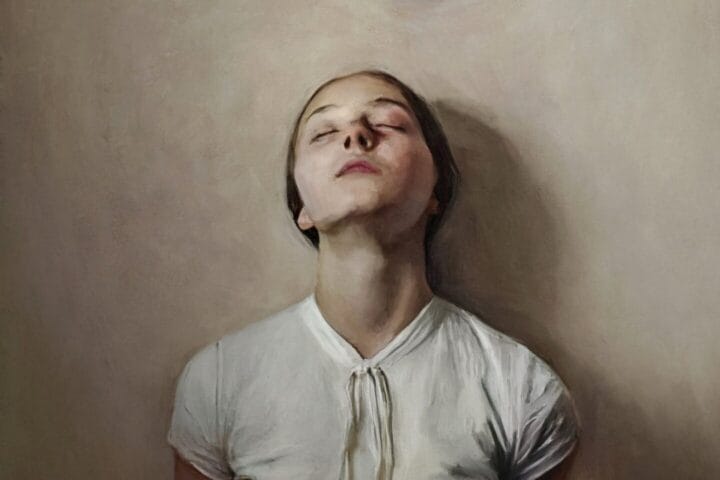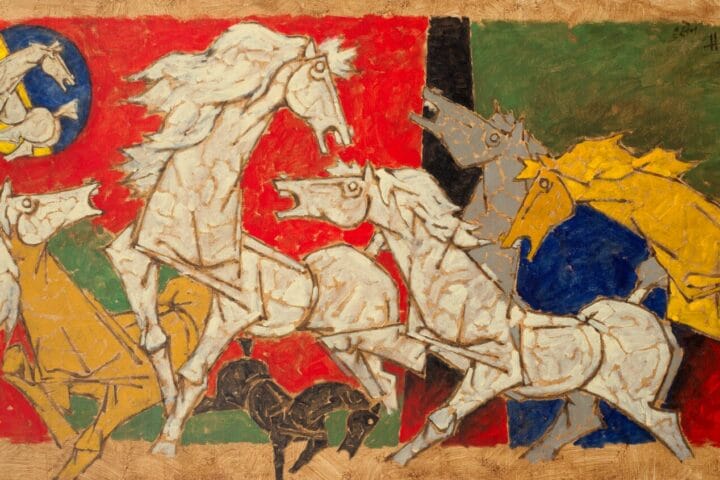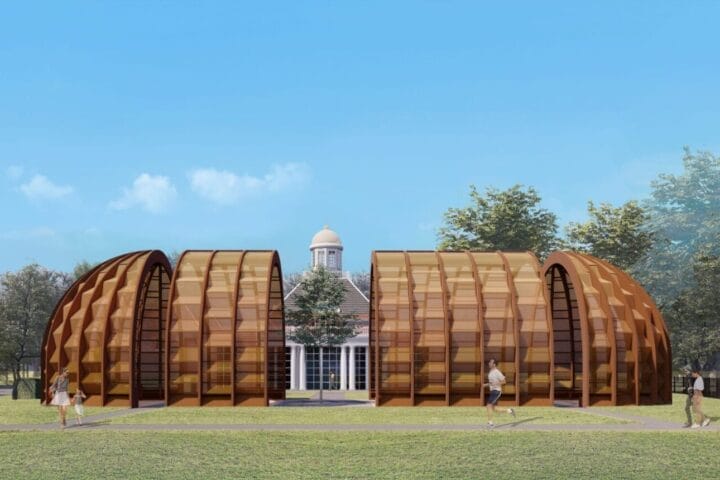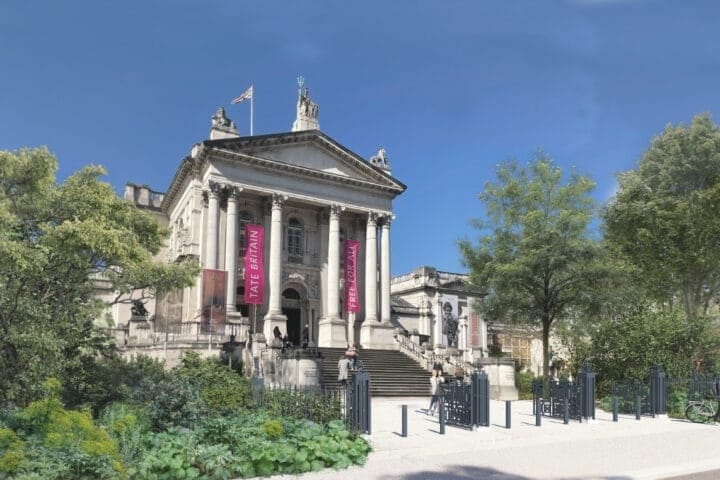The paintings of Belgian-French artist Joseph Lacasse (1894 – 1975) predominantly explore the theme of light. Born in 1894 into the desolation of a working-class family in Tournai, Lacasse’s artistic vocation was first outlined at the local stone quarries where he worked as a young teenager. Lacasse was drawn to the austere structure of the stone, the light reflections of which he intuitively rendered in a fragmented way. When in 1912 Wassily Kandinsky published his manifesto about abstract art, he was unaware that his theories had already been put into practice by the teenager Joseph Lacasse. Whereas Kandinsky reached abstraction through a solid intellectual preparation, Lacasse found himself on the same road through pure and experimental intuition. The refraction of the light into the colour-prism whilst cutting the stone with water informed Lacasse’s oeuvre throughout his career.
In 1925 Lacasse decided to settle in Paris, and following his marriage to the bourgeois but bohemian Stéphanie Lupsin, he took a studio at 11 Impasse Ronsin in Montparnasse in 1928. The first to settle in these desolate rambling studios to transform them into a creative haven was Constantin Brancusi (1916), with whom Lacasse became life-long friends.
During 1927-1928 Lacasse met Robert and Sonia Delaunay, whose influence on his colour-palette would be profound. Whilst practicing Abstraction, Lacasse found the words ‘abstraction’ or ‘abstract’ limiting. In his journal Lacasse describes his metaphysical journey in creating an abstract:
‘I do not know why I find the word ‘abstract’ inapt, for I regard the finished (abstract) painting as something that comes to live, a living object in itself and is therefore the opposite of abstract.’ He continues to say that ‘when the (abstract) painting is born, the painting speaks and acts, the painting has its own life, mysterious and sacred.’
Lacasse’s power to awaken a painting, with subtle or intense light play poetically built up from within, inevitably the pulls the viewer into communicating with the artwork. Thus the artist has succeeded to bring out the real integrating and healing powers of art.
In 1934 Lacasse and his friend, the writer Henry Poulaille founded ‘l’Equipe’, a platform for the independent artist. In 1937 proper exhibition premises on Boulevard Montparnasse were inaugurated with a show of work by Delaunay, Gleizes, Lipchitz, Kisling, Lurçat, Löwenstein, Picabia, Van Tongerloo and Lacasse.
During that crucial year of 1938, Lacasse had known Robert Delaunay personally for ten years, had experimented with Orphism during the 1920s and with Tachism during the mid-1930s. Lacasse showed full maturity in his Abstract researches, demonstrated in his famous ‘Carnets de l’Equipe’ dating 1934-1940. The maturity of these works show Lacasse’s disciplined dedication to a life-long search for pure painting through light and the sublimation of subject matter. In 1938 Serge Poliakoff visited l’Equipe and saw Lacasse’s abstract compositions, which had a profound influence on his work. Sonia Delaunay herself noted in her correspondence that she knows that Lacasse is the precursor of Poliakoff.
Lacasse was a pioneer in many ways, leaving behind a complex and challenging body of work.
However, as a Classicist, Social Realist, a Fauve, a Cubist, a Tachist and an Abstractionist, Lacasse was always on the path of research to deal with the pictorial questions of how to best express light and its refractions. Lacasse was a brilliant and gifted artist with an intellect, character, palette and unmistakable style, as multifaceted as the prism of light itself.
The works of Joseph Lacasse are present in museums worldwide including:
The Carnegie Institute, Pittsburgh
Eilat Museum, Israel
Tel Aviv Museum of Art, lsraeI
Museum of Art, Ein Harod, Israel
Musée d’art moderne de La Ville de Paris, Paris
Musée National d’art moderne, Centre Pompidou, Paris
Musée des Beaux-Arts, Nantes
Musées Royaux des Beaux-Arts de Belgique, Brussels
Musée des Beaux-Arts, Liège
Musée des Beaux-Arts, Tournai
Provincial Museum of Fine Arts, Ostend
Musée d’Histoire et d’Art, Luxembourg
Museum Naradow, Warsaw
National Gallery of Victoria, Melbourne
National Museet, Stockholm
National Museum, Djakarta
Exhibition dates: 25 May – 30 June 2020
Anyone wishing to see the exhibition can do so by appointment at our gallery, subject ot Covid-19 rules.





